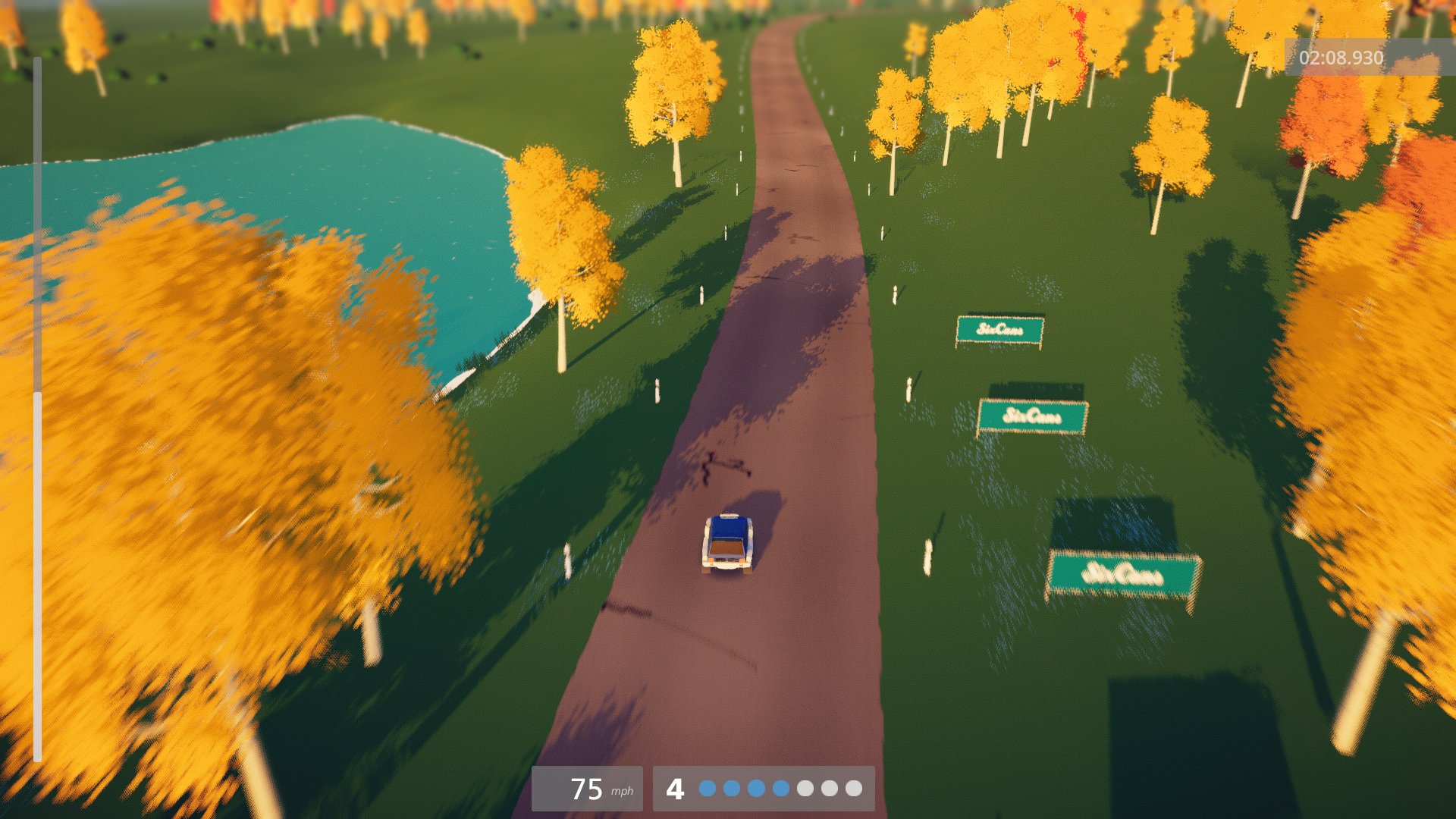Art of Rally, Funselektor’s spiritual successor to Absolute Drift, is a rally racing game stripped down to its fundamentals. With fake cars, spectators that look like 3D Pong paddles or Commander Video from the Bit.Trip series, bare-bones (yet still beautiful) landscapes, and tracks that provide plenty of opportunities for drifting, Art of Rally goes to great lengths to keep the focus on the driving and little else.
There are five modes in Art of Rally: career mode, split between ”Group 2,” “Group 3,” “Group 4,” “Group B,” “Group S” and “Group A,” with each group providing longer rally events and faster cars; a time attack mode where you can race ghosts of your previous races or of other people; custom rally, where you can set your own event location, number of stages (up to 10), competitor AI difficulty and damage level; daily and weekly online events; and Tony Hawk’s Pro Skater-style free roams, where you can traverse each in-game location to track down RALLY letters, cassette tapes, photo spots and the Funselektor van. Each of these modes provides its own unique challenges and interesting gameplay moments; for the purposes of this review I’m only going to talk about the career mode.
I have been slowly chipping away at Art of Rally since it came out on consoles in October of last year, rising through the ranks of the different car groups until by the end I was reliably earning podium finishes and even a couple of championship titles. The game doesn’t really make a big deal out of winning or losing in the career mode, though; no matter what, you get to progress. What Art of Rally values above winning championships is getting players into a kind of a flow state where they “become one” with their car, navigating corners and bumps and other obstacles perfectly, sublimely. This is a problem for me as I never experienced that feeling throughout my playthrough.
I can report that I got better at Art of Rally after playing DIRT Rally for a little bit, but that was because I had become accustomed to hearing my copilot read the course off to me with the upcoming corners and their acuteness. I started hearing that copilot in my head as I was playing Art of Rally, which dispenses of such frivolities in favor of a third-person bird’s eye view of the car, slightly favoring upcoming turns.
The game has no real story to speak of, aside from the vague narrative skeleton of taking players through the (heavily reworked) history of rally racing, and this weird orientalist vibe at the beginning and end of the career mode where a buddha statue comes out of the ground and basically declares you the “master” of rally racing. This shit could have been completely left out and nothing of value would have been lost.

The gameplay itself is more or less fine. I found it frustrating at times, mostly due to rain (which made steering and handling basically impossible, especially as the cars got faster) and the existence of Germany, which has these courses that are lined with concrete tombstone-looking things instead of fences, course markers or haybales. But when the weather isn’t bad or I’m not racing through checks notes Farschweiler, it feels like a very competent rally game.
By the end, though, I was having a pretty good time, even through the rain and Germany levels. Tracks never ended up feeling unchallenging, and as the cars got faster the stages got longer, meaning I had to keep on my A game for longer. The penalty system really makes or breaks runs, as any veering off the track or major crashes can result in an additional five-second loss on top of the time lost veering or crashing, so part of the challenge becomes ”drawing within the lines,” so to speak. Ultimately, I was able to get good enough to where I was the overall Group A series champion of 1996, the last in-game year.
Ultimately, this game is worth a shot. It’s on Xbox Game Pass, the PlayStation Store, and Switch as well as Steam, EGS and GOG, and if you’re looking for a pretty chill racing experience you could do far worse than Art of Rally.
